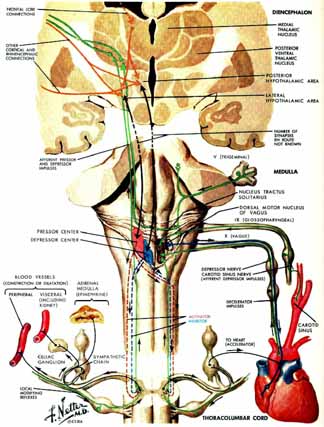RSD With Distant Effects
RSD with Distant Effects is one of the most recently recognized forms of reflex sympathetic dystrophy. In this case, the afflicted person has sympathetic pain associated with true RSD or any of its subtypes and they have autonomically controlled symptoms related to the internal organs (the vicera). These include, but are not limited to rapid heart rate, change in bowel or bladder function, dizziness, or blurred vision.

Based upon our own clinical experience — not everyone agrees that the internal organs can become involved — the most common viscera affected include the heart, eyes, and teeth (see the somato-visceral pain chapter). One of the best explanations for the spread of pain from limb to limb is the “table cloth effect.” In this case, the fascia — the sticky stuff in between the skin and meat in chicken — gets pulled, just like a tablecloth, and causes kinks in distant places.





